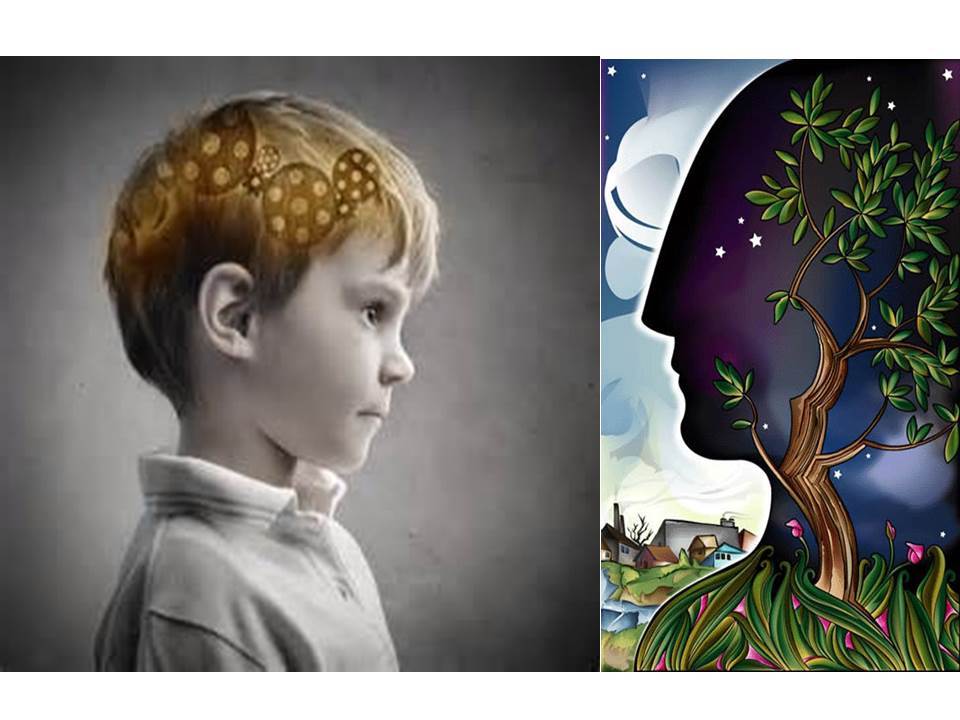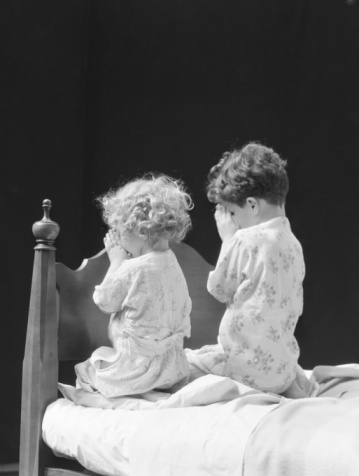[Cathy's note: I don't usually post articles by others on my site, but I made an exception for this one. The following article was included in Marcia Harris Brim's December 2014 enewsletter (Vol. 1, Number 7). While there are a number of resources for teaching a Christian worldview, Marcia does exceptional job of explaining how children actually form their worldview. I selected Marcia's A Young Historian's Introduction to Worldview as one of my Top Picks for 102 Top Picks for Homeschool Curriculum, so she really is an expert on teaching worldview. You can read my review of her products by clicking here, and you can also subscribe to her free enewsletter by clicking here.]

After living and teaching worldview concepts for thirteen years now, I have learned two life changing things: worldviews are the result of the stories we believe, and worldviews flow from the rhythms of our lives.
Years ago, when I first started studying worldview and teaching it to my children and others, my goal was simple: ensure children know what is true and can discern truth from falsehood. A worldview was defined as a set of beliefs that shapes the lens through which people see and interpret the world. I wanted my kids to see the world through Christian eyes.
I thought filling their heads with correct Christian doctrines, memory verses, and biblical principles would produce a rudder by which young adults could navigate a sinful world and avoid the cesspools that have shipwrecked many a Christian life.
I know now that doctrines, verses, and principles are helpful and necessary knowledge for growing Christian children, but alone these things cannot be relied upon for shaping a Christian mind and heart that loves God for a lifetime. Let me explain why: Christian beliefs and Bible verses that support them are directed towards and processed by our rational minds. Principles take biblical beliefs and make sound generalized applications for living according to Christian values. Principles too are understood through our logical thinking.

Christian thinking requires filling the rational mind with Christian ideas (doctrines, theology), Bible verses, and biblical principles, but there's more.
While we are building a mental framework for logical thinking based on Christian ideas, we tend to forget: people are more than logical thinking centers. Our minds are more than rational. Reason alone will not preserve Christian thinkers.
Every mind contains two very different centers of thinking: reasoning and imagining. With my imagination, I understand symbols, metaphors, analogies, word pictures, and stories. With my imagination fairy tales and parables come to life. Though neither are true, both can offer powerful sources of truth.
Parents who want to shape Christian thinkers need to consider this question: How do we cultivate a Christian imagination?

Christian thinking requires filling the imaginative mind with Christian stories, images, and metaphors.
Perhaps the most well-known modern Christian thinker by both children and adults is CS Lewis. But the conversion of Lewis is a testimony to the power of the imagination rather than reason. Lewis did not begin his movement toward Christianity by being persuaded that the Christian worldview is more intellectually credible than his ardent atheism. His journey began when Lewis entered the fairy world of writer George MacDonald. MacDonald, according to Lewis, “baptized his imagination.” This baptism occurred long before Lewis’ reason was persuaded.
I wonder how many parents who feel themselves indebted to Lewis for his tales from Narnia recognize that they are also obliged to fairies.
 Chuck Colson’s site provides a terrific, brief summary of the influence of MacDonald on Lewis:
Chuck Colson’s site provides a terrific, brief summary of the influence of MacDonald on Lewis:
The fairies of Phantasties captured Lewis’ imagination, just as his “sons of Adam” and “daughters of Eve,” not to mention a lion, have captured ours. Long before children can make connections to the Christian analogies in Lewis’ tale, they are building a Christian view of the world. Through their imagination, they too must choose sides in a battle with a white witch who seduces with Turkish Delight, or a lion who lays his life down for traitors.
The power of the imagination in adults and children alike, when harnessed with stories, images and metaphors, can shape a view of the world where Christ is king.
Christian minds require both logical thinking based on Christian truths and an imagination filled with Christian images. But, even then, children and adults are more than thinking, imagining minds.
Desires: We are also centers of feelings, of affections, of things we love and things we hate. Whether we understand our affections as located in our minds, our hearts, or even bellies, as the ancient Hebrews did, we are creatures filled with desires. Our desires must be trained to love the good, the beautiful, and the true. Without such training, great gifts of intellectual understanding can be swiftly overridden by the cravings of the body.
In Lewis’s book on the education of young people entitled The Abolition of Man, he writes:
“The little human animal will not at first have the right responses. It must be trained to feel pleasure, liking, disgust, and hatred at those things which really are pleasant, likeable, disgusting, and hateful.” pg.16
How do we teach children what to love and what to hate? Our modeling is crucial. We have the potential to model everyday what loving the good, beautiful, and true looks like. We have the same potential to demonstrate the exact opposite. Beyond confessing to our children when we’ve chased after lesser things, we all need family exemplars that remind every member of our high calling. A friend recommended a terrific You-tube video series for kids that illustrates how this job is done. It’s called “Be the Bee”.
The honey bee is used as the model insect for the Christian life. The bee is drawn to the sweet nectar of beautiful flowers, and it lives in industrious communities where what it makes benefits others. Bees desire the good and beautiful. These desires bless their human neighbors.
In contrast to the bee is the fly. The fly is attracted to garbage dumps and other foul things, and it produces nothing that nourishes others. Your imagination can take you to all sorts of unsavory places, following the fly and her nasty offspring.
Now follow the bee. Where does she lead you?

What child would not prefer honey to dung? Once this association is made, all sorts of Christian goods can be held out as “bee-like”, as worthy of wanting in contrast to worldly ills around which “flies swarm.” All sorts of activities can be evaluated in light of what both insects naturally desire. Bees verses flies elevate a life of beauty and fruitfulness over garbage and decay. The bee is a perfect mascot for the life we want our children to desire. Cultivating what a child loves is key to a Christian worldview.

Christian thinking includes cultivating what the child loves.
These “Be the Bee” videos are produced by Steven Christoforou, an Eastern Orthodox Christian. Though your particular Christian expression may vary from Orthodoxy, I highly recommend watching at least the attached program. It’s less than five minutes, and you can easily adapt the metaphor to explain the Christian life lived as a Catholic or Protestant bee.
The origin of the example of the bee is sourced to the writings of early Church fathers, who shepherded Christian congregations long before the divisions of Orthodox, Catholic, and Protestant churches. The bee belongs to us all.
The Body: Christ never mentioned “worldview” in His conversations with disciples or Pharisees. He never told a parable about it or taught this word to the thousands He fed. But I think I am safe in saying that the modern Christian parent’s interest in worldview is based on these words of Christ:
“And you shall love the Lord your God with all your heart and with all your soul and with all your mind and with all your strength.” Mark 12:30
We want our children to love God with their whole beings. We want worldview training to be a means to that end. But filling the child’s reason with Christian truths and his imagination and desires with Christian stories and images is still not enough. A child, like every other human being, inhabits a body. To love God with all “your strength” refers to muscles found in a body of flesh and blood.
The role my body plays in loving God may not be readily apparent. We might even ask, “Why must I train my body to love God? Beyond what the body houses, a mind, heart, soul and spirit, is it really any more than a container? Isn’t it just a “jar of clay?”
Of course, what it contains is a treasure, but the “chest” also matters. Scripture is quite clear about the significance of the body. Here are just a couple examples: There is a unique category of sins, sins committed in and against the body (Matthew 5:30; 1 Corinthians 6:15,16,19,20 ).
On the other hand, the body can express our highest human calling. Whether bowing, singing, standing, kneeling, or beating our chest in repentance, the body is integral in acts of worship (Philippians 1:20). The sacrifice of the body, though used metaphorically in Romans 12:1, is our highest form of worship.
“Therefore I urge you, brethren, by the mercies of God, to present your bodies a living and holy sacrifice, acceptable to God, which is your spiritual service of worship.”
What these sacrifices actually look like may include the physical acts of fleeing temptation and controlling the tongue, in addition to bowing down to the God who made us body, soul and spirit. The goal is to do in the body those things which are good and acceptable to God.
But there is still more in Scripture that reminds us of the body's value. It is one of the metaphors used for the church. And the Christian understanding of the resurrection includes a glorified body. My body plays a role in my salvation; it too must be sanctified and redeemed.
In Scripture it is clear, the body can be an agent of sin or of good works. Though we recognize these physical acts as originating in the mind, the body is also the gateway to the mind. We learn through our physical senses, but our bodies are more than data-gathering centers. We don’t often think of the body as an instrument that shapes the mind. But it does, everyday.
So, how does the body train the mind to love God?
The body instructs the mind, not only through what it hears, tastes, smells, sees, and feels. Through what it does repeatedly, the body teaches the mind what to value, what to keep.
Habits, practices, or rituals, done in the body, influence and shape what our affections love and what the mind deems worthy. When those habits or rituals reenact stories that fill the imagination, the power of practice cannot be overstated.
Highlights from a seminar
I teach a seminar to parents called “Raising Christian Thinkers.” It includes a section on common Christian practices like Sabbath keeping, prayer, fasting, singing, forgiveness, Bible reading, hospitality, etc.
I spend a good deal of time talking about how God taught his children to keep the Sabbath through gathering bread and quail in the wilderness, and the significance of this ritual in reenacting God’s creation narrative. But as I have covered this topic in previous newsletters, I’ll skip ahead here to the practice of kneeling prayers.
Kneeling Prayers: I highly recommend kneeling prayers at bedtime. I also suggest beginning by having the family recite Psalm 95:6,7 together.
“Come let us bow down in worship, let us kneel before the Lord our God our Maker; for He is our God and we are the sheep of his pasture, the flock under his care.”

Last summer, a dad in one of my classes took me up on my suggestion. Here’s an excerpt from the letter I received from him several months later.
“I wanted to thank you for teaching the session titled: Raising Christian Thinkers. Since the conference, I have begun “kneeling prayers” with my kids every night before bedtime. We all line up along the bottom bunk bed and kneel together before the Lord our God as the sheep of His pasture. We recite the verses from the psalm you suggested (the kids had it memorized in no time), and then we each say a prayer to God. It has been great to see how easily my boys have adapted to this new habit and they even remind me when I forget.
This is such a powerful practice. At first my youngest son, age 3 and a half, would not pray by himself, but insisted on repeating a prayer that I fed him. Every night we repeated the same pattern. But one night, after I asked him to pray, he mumbled something unintelligible to God. I encouraged him by saying that was a good prayer. The next night when he tried to defer, I reminded him that he had prayed the night before and encouraged him that he could do it again. Just by the repetition of doing it every night he grew in confidence. At this point, he always wants to be the first to pray and will cry if he isn’t. This is a good problem to have.
I can even see the impact of this practice on my two-year old daughter. She likes to kneel with us and say “men” whenever anyone finishes their prayer. I am excited to see the fruit of regular prayer on my children as they grow up. We never did this practice when I was a child. I want to thank you for inspiring me to begin this habit at home. God bless you for your ministry.”
His letter was a tremendous blessing, as I pictured four little heads bowed with hands folded and a daddy leading the lambs God has entrusted to him. Long before those developing minds can comprehend the full meaning of the psalm they are reciting by rote, their body is teaching their head that God is worthy of worship, worthy of bended knees, worthy of acknowledging the source of the goodness in their lives. A Christian worldview is forming as little children pray.
How the body teaches the mind: The body will tell the mind that this posture of kneeling is not exactly comfortable. The mind may suggest to the body that the same words can be prayed lying in bed. But the body continues to kneel. Then the mind must reason something like this: Oh yeah, I am talking to God. He is worthy of this discomfort. This is what my body does when it worships God. Kneeling honors my king.
When the body does this night after night, the mind becomes ingrained with the truth that God is worthy of worship even when the body must sacrifice what brings it pleasure or comfort. Through continual sacrifices, my desire to honor God becomes stronger than my desire to satisfy my body.
Fasting is an example of another practice that works in exactly the same way.
A childhood rich in practices such as kneeling prayers could make “purity pledges” for teenagers superfluous.
Summary: If what we desire above all else to raise children who love God, then we must teach to the whole boy or girl. We must understand worldview as the result or sum total of the truths we believe, the images that guide us, the desires that fill us, and repetitive actions that our bodies undertake.
Below is a diagram I developed to illustrate the child (the holiday cookie) we are attempting to train. You might spend some time evaluating the ways in which you are training your child’s reason, imagination, desires, and body.

Copyright Marcia Harris Brim, 2014.
This article is reprinted by permission of the author.
Marcia Harris Brim of BrimWood Press writes a free bi-monthly newsletter for Christian parents to provide practical, relevant help for the on-going work of evangelizing our children. Marcia’s books for teaching 10 to 13 year old children Theology, History and Worldview are available at www.brimwoodpress.com







